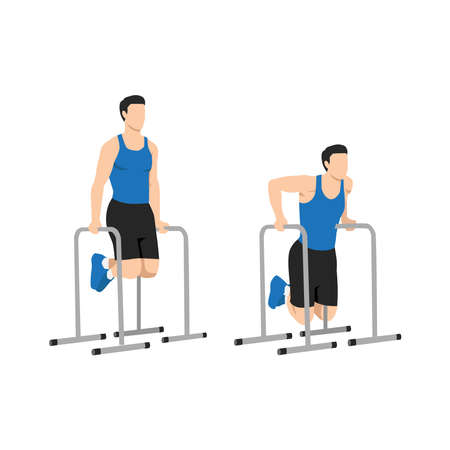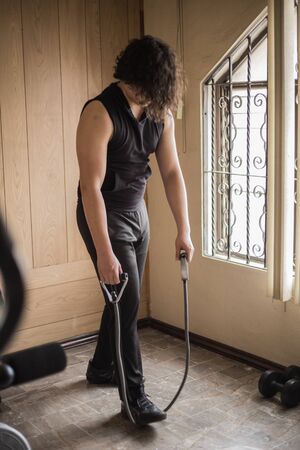Understanding Your Physiotherapy Goals
Before you even think about grabbing a resistance band or picking up a set of weights, it’s essential to clarify your own physiotherapy objectives. In the UK, physiotherapy is often prescribed for a wide range of reasons – from post-surgery rehab (like knee replacements after a rugby injury) to managing chronic conditions such as arthritis or aiding recovery after a fall. Ask yourself: are you aiming to regain mobility, build strength, improve balance, or simply reduce pain? Each goal will influence the type of equipment that best supports your recovery journey. For instance, someone recovering from a hip replacement may need lighter resistance bands and focus on controlled movements, while an amateur footballer dealing with an ankle sprain might require progressive loading with both bands and free weights. By reflecting on your unique needs and discussing them with your physio, you’ll be much better placed to select kit that actually helps rather than hinders your progress.
Types of Resistance Bands and Weights Available in the UK
When it comes to physiotherapy, the sheer variety of resistance bands and weights on offer across the UK can feel a bit overwhelming. Knowing what’s out there—and which options are best for your needs—makes all the difference in recovery or strengthening routines. Here’s a practical breakdown of the most popular types, where you can source them locally, and some typical British terminology you’ll encounter along the way.
Popular Resistance Bands
Resistance bands are a staple in physio settings and home workouts alike. Here’s a quick comparison:
| Type | Description | UK Terminology | Where to Buy |
|---|---|---|---|
| Therapy Bands | Flat, wide bands often used for gentle rehab exercises | TheraBands, Physio Bands | B&Q, Boots, Argos, local chemists |
| Loop Bands | Circular, closed-loop bands for lower body work | Mini Bands, Booty Bands | Sports Direct, Decathlon, Amazon UK |
| Tubing with Handles | Tube-shaped bands with grips at each end for versatile resistance training | Resistance Tubes | Tesco, John Lewis, online retailers |
| Figure 8 Bands | Shaped like an ‘8’, useful for targeted upper body exercises | Figure Eight Bands | Sainsbury’s, health stores, eBay UK |
Common Types of Weights Used in Physiotherapy
The right kind of weight depends on your specific rehab or strengthening goals. In the UK, here are your main choices:
| Type | Description | UK Terminology | Where to Buy |
|---|---|---|---|
| Dumbbells | Hand-held free weights, great for progressive loading and grip strength work | Dumb-bells (often spelled with a hyphen) | Argos, Sports Direct, Decathlon, local gyms selling surplus kit |
| Kettlebells | Cannonball-shaped weights with a handle; ideal for functional movements and core stability work | Kettlebells (sometimes called “kettle bells”) | Lidl/Aldi (special buys), fitness shops, online deals from UK brands like Mirafit or Bodymax |
| Ankle/Wrist Weights | Strap-on weights adding extra load to walking or rehab exercises without needing to grip anything by hand | Ankle Cuffs, Wrist Cuffs (or simply “strap-on weights”) | Boots, Decathlon, local physio supply stores and supermarkets’ fitness aisles |
| Medicine Balls | Slightly weighted balls used for dynamic or throwing movements during rehab sessions | Med Balls | Sweatband.com, Argos, specialist sports shops |
A Note on Sizing and Colour Coding in the UK
The British market often uses colour coding to indicate resistance levels—though these can vary between brands. For example, yellow may be light resistance at one shop but medium at another. Always double-check the label or ask staff if you’re buying in-store.
Your Local Options: Where Brits Shop for Physio Gear
If you want to see products before buying—or need advice—high street chains like Argos or Sports Direct can be a good starting point. Supermarkets such as Tesco and Sainsbury’s now stock basic gear too. For specialist advice or premium brands (think Theraband or Bodymax), check dedicated fitness outlets or independent physio suppliers online.
Selecting the right equipment is all about matching your needs with the available options—whether you’re picking up a set of mini bands at Boots or investing in a quality kettlebell from a local shop. Understanding what’s out there in the UK will help you make an informed choice for your physiotherapy journey.

3. Key Factors to Consider Before Buying
When it comes to selecting the best resistance bands and weights for your physiotherapy needs, it’s essential to weigh up several key factors before making your purchase.
Resistance Level
Start by assessing your current strength and rehabilitation goals. Resistance bands come in a variety of strengths, typically colour-coded to indicate different levels. For beginners or those recovering from injury, lighter bands are ideal, while seasoned users may benefit from heavier resistance. Weights should also be tailored to your ability—always opt for a manageable load that allows you to complete exercises with proper form.
Material Quality
The durability and comfort of your equipment are paramount, especially if you plan on regular use at home. Look for high-quality latex or fabric bands that resist snapping and fraying. Weights should be robust, with well-secured grips and non-slip coatings where possible. Investing in trusted brands might cost a bit more upfront but ensures longevity and safety.
Ease of Use at Home
Your equipment needs to fit seamlessly into your daily routine. Resistance bands are lightweight and portable, but check if they come with door anchors or handles to increase versatility at home. When considering weights, compact dumbbells or adjustable sets can save space and provide flexibility as you progress.
British Safety Standards
Above all, make sure any equipment you choose meets British safety standards. Look for CE marking and compliance certificates on packaging or product descriptions. This guarantees the product has passed rigorous checks for quality and safety—a crucial consideration for anyone recovering from injury or managing long-term conditions.
Personal Experience
From my own journey through rehab, I quickly learnt that buying cheaper, unbranded equipment often led to frustration and setbacks. A snapped band mid-exercise is not just annoying—it can be dangerous! Investing a bit more for quality and safety truly pays off in the long run.
4. Matching Equipment to Your Physiotherapy Routine
Selecting the right resistance bands and weights isn’t just about picking what’s on offer at your local sports shop—it’s about making sure your choices truly support your physiotherapy routine, as recommended by UK-trained professionals. The NHS and Chartered Society of Physiotherapy often stress that using the right equipment is crucial for both safety and progress.
Personalising Your Gear Selection
Physiotherapists in the UK typically prescribe exercises tailored to your injury or rehabilitation goals. This means you’ll need bands and weights that match the specific movements you’re working on, whether it’s for post-op knee rehab, building up shoulder strength, or improving general mobility after an injury. Here are some practical tips to help you make the right choice:
- Follow Your Physio’s Guidance: Always refer to the resistance levels and weight ranges specified in your exercise plan. Using heavier or lighter than advised can hinder your progress—or worse, cause setbacks.
- Consider Progression: Start with lighter resistance or smaller weights if you’re new to a movement, gradually increasing as your strength and confidence improve.
- Check for Compatibility: Some exercises require loop bands (e.g., for glute bridges), while others might be better with tube bands with handles (like rows or bicep curls). Dumbbells may be preferable for controlled strengthening moves.
Quick Reference Table: Equipment for Common Physiotherapy Exercises
| Exercise Type | Recommended Band/Weight | UK Physio Tip |
|---|---|---|
| Knee Strengthening (e.g., squats) | Medium-loop resistance band | Start with medium tension; focus on form over force |
| Shoulder Rehab (rotator cuff) | Light tube band with handles | Avoid high resistance; control the movement throughout |
| Ankle Mobility | Light flat band | Anchor securely under foot; don’t rush reps |
| General Strengthening | 1-2kg dumbbells or adjustable wrist weights | Add weight only when exercises feel easy and pain-free |
| Pilates-based Core Work | Pilates ring & light resistance band | Emphasise slow, controlled movement—quality over quantity |
A Final Thought from Experience
I’ve found that matching equipment to my physio routine keeps me motivated and ensures I’m progressing safely. Don’t hesitate to check in with your physiotherapist if you’re unsure—having the right kit at home can make all the difference between just doing exercises and truly recovering well.
5. Best Places to Shop for Physio Equipment in the UK
When it comes to sourcing reliable resistance bands and weights for your physiotherapy, knowing where to shop is just as important as knowing what to buy. In the UK, we’re fortunate to have a wealth of reputable retailers and online suppliers dedicated to quality physio gear. Whether you prefer browsing in person or shopping from the comfort of home, here are some trusted options that offer both value and assurance.
High Street Retailers
For those who like to see and feel equipment before making a purchase, Argos and Decathlon are great starting points. Both stock a range of resistance bands, free weights, and starter kits suitable for rehabilitation. Decathlon is particularly well-regarded for its knowledgeable staff and affordable in-house brands. For something more specialist, Lloyds Pharmacy often carries physio-specific bands and small weights aimed at recovery.
Specialist Physiotherapy Suppliers
If you’re after professional-grade gear, look no further than Physique Management and PhysioRoom. These British companies supply clinics across the country and offer an extensive range of resistance bands, dumbbells, and rehab accessories tailored for physio needs. Their products are often recommended by NHS physiotherapists and come with clear guidelines on use.
Online Marketplaces
Amazon UK remains a go-to for convenience and variety, but it’s wise to check seller ratings and product reviews carefully. If you want peace of mind about authenticity and quality, stick to recognised brands such as TheraBand, RehabMedic, or Core Balance, which are commonly available on Amazon as well as other platforms like John Lewis Online.
A Few Tips from Experience
If you’re shopping online, always double-check return policies and warranty options—especially if you’re investing in higher-end kit. I’ve found that ordering directly from specialist suppliers sometimes results in better after-sales support should you need advice down the line.
The Bottom Line
No matter where you choose to buy, prioritise quality over price when it comes to physiotherapy equipment. Investing in reputable British retailers not only ensures safety but can make a real difference in your recovery journey.
6. Caring for Your Resistance Bands and Weights
Looking after your physiotherapy equipment is just as important as choosing the right kit in the first place. Whether you’ve invested in resistance bands or free weights, a bit of regular TLC will keep them safe, hygienic, and effective for years to come. Here’s some practical advice for keeping your gear in top nick, all with an eye on UK health and safety standards.
Routine Cleaning and Maintenance
First things first – cleanliness matters. After each use, give your resistance bands a wipe down with a damp cloth or mild soapy water. This helps remove sweat, oils, and grime that can break down the material over time. For weights, especially if you share them at home or in a clinic, use antibacterial wipes or spray to keep germs at bay. Always dry everything thoroughly before storing to prevent mould or rust, particularly given our famously damp British weather.
Storage Tips for Longevity
Don’t just chuck your equipment in a cupboard! Store resistance bands away from direct sunlight and extreme temperatures – both can degrade the latex or fabric. Hanging them up or rolling them loosely stops creases forming, which can weaken the material. For weights, stack them securely on a rack or shelf to avoid accidents and protect your flooring. If you’re tight on space, consider under-bed storage boxes or a dedicated gym corner.
Regular Safety Checks
It’s easy to overlook small cracks or tears in bands until one snaps mid-exercise. Get into the habit of inspecting your kit every week: look for fraying edges on bands and check weights for loose parts or rust spots. In the UK, health and safety regulations recommend replacing any damaged equipment promptly—better safe than sorry! If you notice wear and tear, it’s time for a replacement.
Mindful Usage
Always follow manufacturer guidelines regarding maximum stretch or weight limits. Overstretching bands or overloading weights not only shortens their lifespan but also increases injury risk. Use mats when working out on hard floors to cushion both yourself and your equipment.
Final Thoughts: Invest in Care for Long-Term Results
Taking good care of your resistance bands and weights isn’t just about saving money; it’s about ensuring every session is safe and effective. A few minutes’ attention after each workout goes a long way. By keeping your kit clean, stored properly, and regularly inspected, you’ll get the most out of your investment – and stay on track with your physiotherapy goals.

